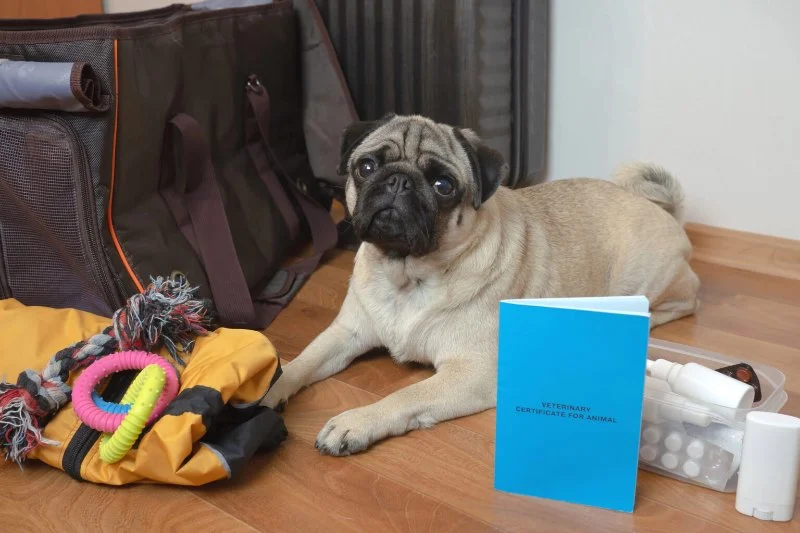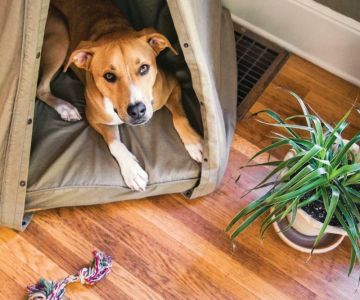
How to Build a Pet Emergency Kit: Essentials You Need
- 1 - Why an Emergency Kit for Pets is Essential
- 2 - What to Include in Your Pet Emergency Kit
- 3 - Food and Water: The Basics for Survival
- 4 - Medications and Health Supplies
- 5 - Important Documents and Identification
- 6 - Real-Life Case: How a Pet Emergency Kit Saved the Day
1. Why an Emergency Kit for Pets is Essential
Emergencies can strike at any time, whether it’s a natural disaster, medical emergency, or an unexpected situation where you need to evacuate quickly. Having an emergency kit for your pets is just as important as having one for yourself. Pets rely on their owners to keep them safe and cared for during stressful situations, and being prepared is the best way to ensure their well-being during a crisis.
Whether you’re dealing with a hurricane, wildfire, or even a sudden health issue, a pet emergency kit will allow you to respond quickly and keep your furry friend comfortable. A well-thought-out kit can save you time, prevent unnecessary stress, and provide the resources your pet needs in an emergency situation.
2. What to Include in Your Pet Emergency Kit
Building a pet emergency kit involves gathering essential items that will help you manage your pet’s needs during an emergency. Here’s a list of key supplies you should include:
2.1 Food and Water
Your pet’s food and water are the most essential items to pack in an emergency kit. You should have enough food to last for at least three to five days, depending on your pet’s size. Opt for non-perishable food that doesn’t require refrigeration, such as canned food or freeze-dried options.
Water is equally important. Make sure to pack at least one gallon of water per pet per day, and have enough for both hydration and cleaning purposes. Water bottles or collapsible bowls are great for portability.

Three Springs Animal Hospital
Bowling GreenWarren CountyKentucky
442 Three Springs Rd, Bowling Green, KY 42104, USA
2.2 Medications
If your pet is on any regular medications, make sure to have enough to last through the emergency period. This includes flea, tick, or heartworm preventatives, as well as any prescription medications your pet needs for ongoing health conditions.
2.3 First Aid Supplies
In addition to medications, you should pack a basic first aid kit for your pet. This can include gauze, antiseptic wipes, bandages, tweezers, and any other supplies necessary for minor injuries or illnesses. A pet first aid manual is also recommended to help guide you through any situations that arise.
2.4 Carrier and Leash
Having a carrier or crate on hand is crucial if you need to transport your pet to a shelter or new location. It’s also useful if your pet is stressed and needs a quiet, secure place. A sturdy leash is also important for walking your pet safely in an emergency setting.
3. Food and Water: The Basics for Survival
When building your pet emergency kit, food and water should be your top priority. Having enough food and water on hand will keep your pet nourished and hydrated during emergencies when supplies may be limited. It’s essential to remember that pets have different dietary needs based on their size, age, and health condition.
Keep your pet’s food in airtight containers or vacuum-sealed bags to preserve its freshness. Don’t forget to include a can opener if you’re storing canned food. Additionally, water bowls or portable drinking systems can make it easier to keep your pet hydrated if you’re on the move.
In case of a prolonged emergency, it’s important to rotate your pet’s food and water every few months to ensure it stays fresh. And don’t forget to pack your pet’s favorite treats or snacks to keep their spirits up during stressful times!
4. Medications and Health Supplies
Many pets rely on medications to manage chronic conditions, so it’s vital to include them in your emergency kit. This ensures that your pet’s health is not compromised during an emergency. Here are some tips for managing your pet’s medications:
4.1 Prescription Medications
Ensure you have enough of your pet’s prescription medications to last through an emergency. Store them in a cool, dry place and keep them in their original packaging to avoid confusion. If possible, have a note from your vet detailing the medication and dosage instructions.
4.2 Flea and Tick Prevention
Flea and tick prevention is essential to include, especially during summer months when pests are most active. Pack flea collars, spot-on treatments, or oral medications to prevent infestations in an emergency situation.
4.3 Health Monitoring Tools
Basic tools to monitor your pet’s health during an emergency, such as a thermometer, can be helpful. If your pet has any specific health concerns, consider packing additional items to manage them, like an asthma inhaler for pets with respiratory issues or insulin for diabetic pets.
5. Important Documents and Identification
In an emergency, keeping track of your pet’s health records, identification, and other important documents is crucial. These can help ensure your pet’s safety and ease the process of boarding or evacuating. Here’s what you should include:
5.1 Identification Tags
Make sure your pet has up-to-date identification tags with your current contact information. Microchipping is also highly recommended for additional security, especially if your pet gets lost during an evacuation.
5.2 Health Records
Include a copy of your pet’s health records, including vaccination history, medications, and any known allergies. This will be especially important if your pet requires veterinary care in an emergency situation.
5.3 Emergency Contact Info
Include the contact information for your veterinarian, as well as any emergency pet services you might need. This ensures that you have all necessary contacts in one place in case of urgent health needs.
6. Real-Life Case: How a Pet Emergency Kit Saved the Day
Meet Laura and her cat, Whiskers. During a major snowstorm, they were forced to evacuate their home. Thanks to the pet emergency kit Laura had prepared, she was able to grab Whiskers’ carrier, food, medications, and identification tags quickly. When they arrived at the emergency shelter, Laura was able to provide Whiskers with everything he needed to stay comfortable and calm while they waited for the storm to pass.
Without her well-prepared emergency kit, Laura would have struggled to care for Whiskers in a stressful and chaotic situation. This experience shows just how important it is to be proactive about emergency preparedness for your pets.








 1214 Central Store0.0 (0 reviews)
1214 Central Store0.0 (0 reviews) Burlington Pet Hospital4.0 (118 reviews)
Burlington Pet Hospital4.0 (118 reviews) ArkVets4.0 (426 reviews)
ArkVets4.0 (426 reviews) Hartzell Veterinary Service: Charles W. Hartzell, DVM and Sue Ann Hartzell, DVM4.0 (105 reviews)
Hartzell Veterinary Service: Charles W. Hartzell, DVM and Sue Ann Hartzell, DVM4.0 (105 reviews) Noah's Ark Animal Hospital4.0 (163 reviews)
Noah's Ark Animal Hospital4.0 (163 reviews) Jasper Pet Clinic4.0 (285 reviews)
Jasper Pet Clinic4.0 (285 reviews) Transitioning Training Methods as Pet Ages: Adapting Techniques for Senior Pets
Transitioning Training Methods as Pet Ages: Adapting Techniques for Senior Pets How to Read & Understand Pet Nutrition Labels for Your Pet's Health
How to Read & Understand Pet Nutrition Labels for Your Pet's Health How to Choose the Right Pet Supplement Brand: Essential Tips for Pet Owners
How to Choose the Right Pet Supplement Brand: Essential Tips for Pet Owners How Much Should You Feed Your Pet? Portion Guide by Age & Breed
How Much Should You Feed Your Pet? Portion Guide by Age & Breed How to Create a Pet Health Journal: Metrics to Track for Better Pet Care
How to Create a Pet Health Journal: Metrics to Track for Better Pet Care What Breed-Specific Health Issues You Should Be Aware Of
What Breed-Specific Health Issues You Should Be Aware Of